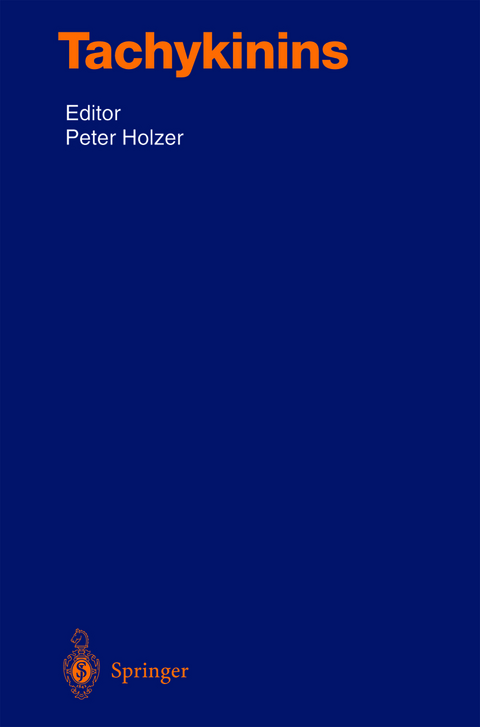
Tachykinins
Springer Berlin (Verlag)
978-3-642-62342-4 (ISBN)
Peter Holzer obtained his Ph.D. in Physiology and Biochemistry from the University of Graz, Austria, in 1978. His academic career included a postdoctoral fellowship at the A.R.C. Institute of Animal Physiology and the M.R.C. Neurochemical Pharmacology Unit at the University of Cambridge, U.K., in 1980. After becoming Reader in Neuropharmacology at the University of Graz in 1985, he was a visiting scientist with the CURE Digestive Diseases Research Center at the University of California Medical School in Los Angeles, U.S.A., in 1989. In 1993 he was promoted to Professor of Neuropharmacology in the Department of Experimental and Clinical Pharmacology at the University of Graz, Austria. In 2000 Dr. Holzer declined to take the chair of Pharmacology and Toxicology at the Department of Pharmacy of the University of Innsbruck, Austria.
History of a Pioneering Neuropeptide: Substance P.- The Tachykinin Peptide Family, with Particular Emphasis on Mammalian Tachykinins and Tachykinin Receptor Agonists.- The Histochemistry of Tachykinin Systems in the Brain.- The Nomenclature of Tachykinin Receptors.- The Mechanism and Function of Agonist-Induced Trafficking of Tachykinin Receptors.- Tachykinin NK1 Receptor Antagonists.- Tachykinin NK2 Receptor Antagonists.- Tachykinin NK3 Receptor Antagonists.- Combined Tachykinin NK1, NK2, and NK3 Receptor Antagonists.- Pre-protachykinin and Tachykinin Receptor Knockout Mice.- Therapeutic Potential of Tachykinin Receptor Antagonists in Depression and Anxiety Disorders.- The Role of Tachykinins and the Tachykinin NK1 Receptor in Nausea and Emesis.- Substance P (NK1 Receptor Antagonists-Analgesics or Not?.- Role of Tachykinins in Neurogenic Inflammation of the Skin and Other External Surfaces.- Role of Tachykinins in Obstructive Airway Disease.- Role of Tachykinins in the Gastrointestinal Tract.
| Erscheint lt. Verlag | 1.11.2012 |
|---|---|
| Reihe/Serie | Handbook of Experimental Pharmacology |
| Zusatzinfo | XII, 569 p. 112 illus. |
| Verlagsort | Berlin |
| Sprache | englisch |
| Maße | 155 x 235 mm |
| Gewicht | 812 g |
| Themenwelt | Medizin / Pharmazie ► Medizinische Fachgebiete ► Pharmakologie / Pharmakotherapie |
| Medizin / Pharmazie ► Pharmazie | |
| Schlagworte | Antiemetic Effects of Tachykinin Receptor Antagoni • Antiemetic Effects of Tachykinin Receptor Antagonists • clinical application • Neuropeptides • Substance P • Tachykinin Receptor Antagonists as Novel Drugs • Tachykinin Receptors • Tachykinins |
| ISBN-10 | 3-642-62342-5 / 3642623425 |
| ISBN-13 | 978-3-642-62342-4 / 9783642623424 |
| Zustand | Neuware |
| Informationen gemäß Produktsicherheitsverordnung (GPSR) | |
| Haben Sie eine Frage zum Produkt? |
aus dem Bereich


